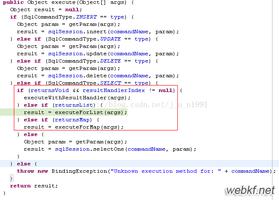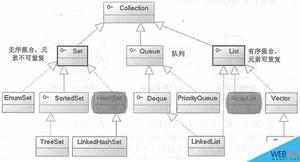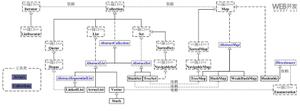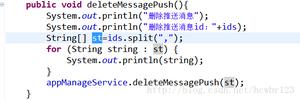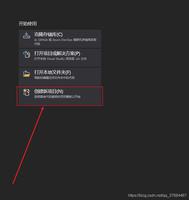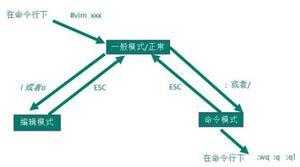Python collections模块

整理自:博客 & Python中文
常用的有:defaultdict、deque、Ccounter
defaultdict 对象
class collections.defaultdict([default_factory[, ...]])
1)在有dict的情况下为何使用defaultdict:
使用dict时,如果引用的Key不存在,就会抛出KeyError。如果希望key不存在时,返回一个默认值,就可以用defaultdict:
2) default_factory如何设置:
第一个参数 default_factory 提供了一个初始值。它默认为 None 。所有的其他参数都等同与 dict 构建器中的参数对待,包括关键词参数。我的理解是若不设置default_factory,则当查找一个不存在的键时,就会报错:
>>> d = defaultdict() # 没有初始化参数default_factory>>> d
defaultdict(None, {})
>>> d['a']
Traceback (most recent call last):
File "<stdin>", line 1, in <module>
KeyError: 'a'
那么,default_factory可以取哪些可调用方法呢?有很多: list, set, int, lambda :None, lambda :0 等等。
- list
>>> s = [('yellow', 1), ('blue', 2), ('yellow', 3), ('blue', 4), ('red', 1)]>>> d = defaultdict(list) # 对于不存在的键,返回list()
>>> for k, v in s:
... d[k].append(v) # d[k]就是列表
...
>>> sorted(d.items())
[('blue', [2, 4]), ('red', [1]), ('yellow', [1, 3])]
>>> d = defaultdict(list)
>>> d
defaultdict(<class 'list'>, {})
>>> d['a'] # 键‘a’不存在,则赋予空列表。相当于a=list()
[]
>>> d
defaultdict(<class 'list'>, {'a': []}) # 注意到‘a’虽不存在,但也被添加到字典里
- set
>>> s = [('red', 1), ('blue', 2), ('red', 3), ('blue', 4), ('red', 1), ('blue', 4)]>>> d = defaultdict(set) # set()
>>> for k, v in s:
... d[k].add(v) # d[k]就是集合
...
>>> sorted(d.items())
[('blue', {2, 4}), ('red', {1, 3})]
- int
>>> s = 'mississippi'
>>> d = defaultdict(int) # int()总是为0
>>> for k in s:
... d[k] += 1
...
>>> sorted(d.items())
[('i', 4), ('m', 1), ('p', 2), ('s', 4)]
- lambda :None
>>> d = defaultdict(lambda : None) # f = lambda : None. f()总是返回None. 这个例子就没有上面那么有实际意义
>>> d['a']
>>> d
defaultdict(<function <lambda> at 0x0000025FF637F048>, {'a': None})
>>> d['a']+4
Traceback (most recent call last):
File "<stdin>", line 1, in <module>
TypeError: unsupported operand type(s) for +: 'NoneType' and 'int'
- lambda :0
>>> d = defaultdict(lambda : 0) # f = lambda : 0. f()总是返回None. 这个例子其实和int()一样了
>>> d
defaultdict(<function <lambda> at 0x0000025FF606A0D0>, {})
>>> d['a']
0
>>> d['a']+=1
>>> d
defaultdict(<function <lambda> at 0x0000025FF606A0D0>, {'a': 1})
deque 对象
class collections.deque([iterable[, maxlen]])
返回一个新的双向队列对象,从左到右初始化(用方法 append()) ,从 iterable (迭代对象) 数据创建。如果 iterable 没有指定,新队列为空。
Deque队列是由栈或者queue队列生成的(发音是 “deck”,”double-ended queue”的简称)。Deque 支持线程安全,内存高效添加(append)和弹出(pop),从两端都可以,两个方向的大概开销都是 O(1) 复杂度。
虽然 list 对象也支持类似操作,不过这里优化了定长操作和 pop(0) 和 insert(0, v) 的开销。它们引起 O(n) 内存移动的操作,改变底层数据表达的大小和位置。
如果 maxlen 没有指定或者是 None ,deques 可以增长到任意长度。否则,deque就限定到指定最大长度。一旦限定长度的deque满了,当新项加入时,同样数量的项就从另一端弹出。限定长度deque提供类似Unix filter tail 的功能。它们同样可以用与追踪最近的交换和其他数据池活动。
双向队列(deque)对象支持以下方法:
最常用的不过:append, appendleft, extend, extendleft, pop, popleft
>>> deq = deque(list(),5)>>> deq
deque([], maxlen=5)
>>> deq.append([1,2,3,4])
>>> deq.append(0)
>>> deq.append(0)
>>> deq.append(0)
>>> deq.append(0)
>>> deq
deque([[1, 2, 3, 4], 0, 0, 0, 0], maxlen=5) # 因为设定了最大长度,所以再次添加6的时候,前端出队列
>>> deq.append(6)
>>> deq
deque([0, 0, 0, 0, 6], maxlen=5)
双向队列(deque)对象支持以下方法:
append(x)添加 x 到右端。
appendleft(x)添加 x 到左端。
clear()移除所有元素,使其长度为0.
copy()创建一份浅拷贝。
3.5 新版功能.
count(x)计算deque中个数等于 x 的元素。
3.2 新版功能.
extend(iterable)扩展deque的右侧,通过添加iterable参数中的元素。
extendleft(iterable)扩展deque的左侧,通过添加iterable参数中的元素。注意,左添加时,在结果中iterable参数中的顺序将被反过来添加。
index(x[, start[, stop]])返回第 x 个元素(从 start 开始计算,在 stop 之前)。返回第一个匹配,如果没找到的话,升起
ValueError。3.5 新版功能.
insert(i, x)在位置 i 插入 x 。
如果插入会导致一个限长deque超出长度 maxlen 的话,就升起一个
IndexError。3.5 新版功能.
pop()移去并且返回一个元素,deque最右侧的那一个。如果没有元素的话,就升起
IndexError索引错误。
popleft()移去并且返回一个元素,deque最左侧的那一个。如果没有元素的话,就升起
IndexError索引错误。
remove(value)移去找到的第一个 value。 如果没有的话就升起
ValueError。
reverse()将deque逆序排列。返回
None。
deque 其他用法
1. 过滤功能
def tail(filename, n=10):'Return the last n lines of a file'
with open(filename) as f:
return deque(f, n)
>>> s=[1,2,3,4,5,6]>>> deque(s,3)
deque([4, 5, 6], maxlen=3)
文档里还有一些稍微复杂的例子。下面是python中栈和队列的另一种表现:
栈直接用列表实现:
The list methods make it very easy to use a list as a stack, where the last element added is the first element retrieved (“last-in, first-out”). To add an item to the top of the stack, use append(). To retrieve an item from the top of the stack, use pop() without an explicit index. For example:
>>> stack = [3, 4, 5]>>> stack.append(6)
>>> stack.append(7)
>>> stack
[3, 4, 5, 6, 7]
>>> stack.pop()
7
>>> stack
[3, 4, 5, 6]
>>> stack.pop()
6
>>> stack.pop()
5
>>> stack
[3, 4]
队列就是上面的deque:(列表插入或删除都太低效了,所以用双向队列来实现)
It is also possible to use a list as a queue, where the first element added is the first element retrieved (“first-in, first-out”); however, lists are not efficient for this purpose. While appends and pops from the end of list are fast, doing inserts or pops from the beginning of a list is slow (because all of the other elements have to be shifted by one).
To implement a queue, use collections.deque which was designed to have fast appends and pops from both ends. For example:
>>> from collections import deque>>> queue = deque(["Eric", "John", "Michael"])
>>> queue.append("Terry") # Terry arrives
>>> queue.append("Graham") # Graham arrives
>>> queue.popleft() # The first to arrive now leaves
'Eric'
>>> queue.popleft() # The second to arrive now leaves
'John'
>>> queue # Remaining queue in order of arrival
deque(['Michael', 'Terry', 'Graham'])
Counter 对象
一个计数器工具提供快速和方便的计数。比如
>>> # Tally occurrences of words in a list>>> cnt = Counter()
>>> for word in ['red', 'blue', 'red', 'green', 'blue', 'blue']:
... cnt[word] += 1
>>> cnt
Counter({'blue': 3, 'red': 2, 'green': 1})
class collections.Counter([iterable-or-mapping])
一个 Counter 是一个 dict 的子类,用于计数可哈希对象。它是一个集合,元素像字典键(key)一样存储,它们的计数存储为值。计数可以是任何整数值,包括0和负数。 Counter 类有点像其他语言中的 bags或multisets。
元素从一个 iterable 被计数或从其他的 mapping (or counter)初始化:
>>> c = Counter() # a new, empty counter>>> c = Counter('gallahad') # a new counter from an iterable
>>> c = Counter({'red': 4, 'blue': 2}) # a new counter from a mapping
>>> c = Counter(cats=4, dogs=8) # a new counter from keyword args
Counter对象有一个字典接口,如果引用的键没有任何记录,就返回一个0,而不是弹出一个 KeyError :
>>> c = Counter(['eggs', 'ham'])>>> c['bacon'] # count of a missing element is zero
0
设置一个计数为0不会从计数器中移去一个元素。使用 del 来删除它:
>>> c['sausage'] = 0 # counter entry with a zero count>>> del c['sausage'] # del actually removes the entry
以上是 Python collections模块 的全部内容, 来源链接: utcz.com/z/386938.html

